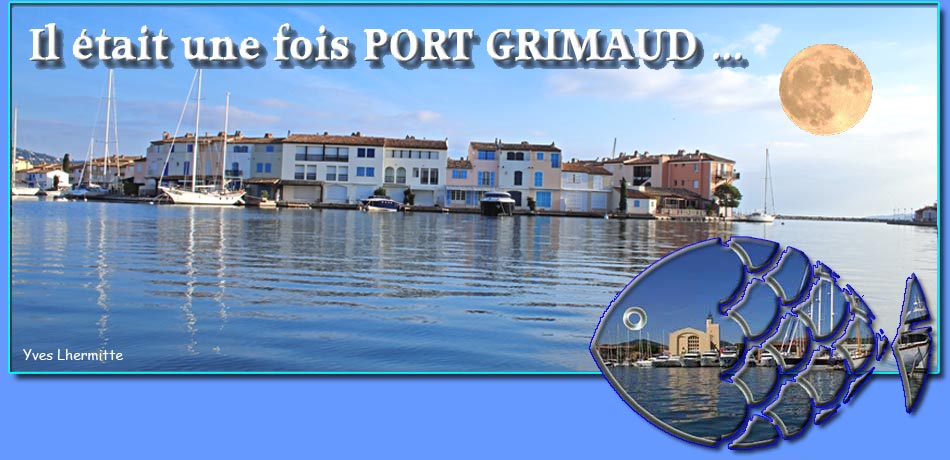
François SPOERRY and abbé PIERRE :
While reading the book "Committed Protestants: Social Christianity, 1945-1970" by Raoul Crespin. (published in 1993) I discovered, by chance, a whole chapter of the life of François SPOERRY totally ignored: his meeting with abbé PIERRE 
The Tassin meetings :In 1948, a social movement was created: "Les rencontres de Tassin" which brought together twice a year, heads of companies and their close collaborators in order to seek "human solutions" and not easy solutions, in case of crisis in the company. "The company", thought the two creators of these meetings, "was at the crossroads of economic and human problems and therefore one of the places where the insertion of the demands of the Gospel was at the same time the most necessary, the most difficult and the most promising"... At the request of François Spoerry, meetings were organised in Alsace... These meetings had a considerable impact on several companies : - raising wages - improvement of working conditions - collective labour promotion - individual promotion by improving the climate, training and informing staff, more responsibility and thus more dignity. This is a far cry from today's social climate! 

Sausheim :In 1953, François Spoerry built his first emergency housing estate in Sausheim, near Mulhouse: 20 dwellings in a row. Following this success, which was built very quickly, the government contacted the architect to invite him to build other two-room emergency housing in Plessis-Trévise on the same model as those in Sausheim. François Spoerry joined forces with his friend, the architect Pierre Dufau, who had a large office in Paris. 250 buildings were planned. In April 1954, the 51 housing units designed by François Spoerry, constituting the first phase of the 'Cité de la Joie', were inaugurated. But for the rest of the planned social programmes, the government is asking the architect to lower his prices... François Spoerry had estimated the cost of a home, including furniture, at 1,194,145 francs (value 1953). The government provided for a maximum budget of 650,000 francs for Plessi-Trévise (1953) 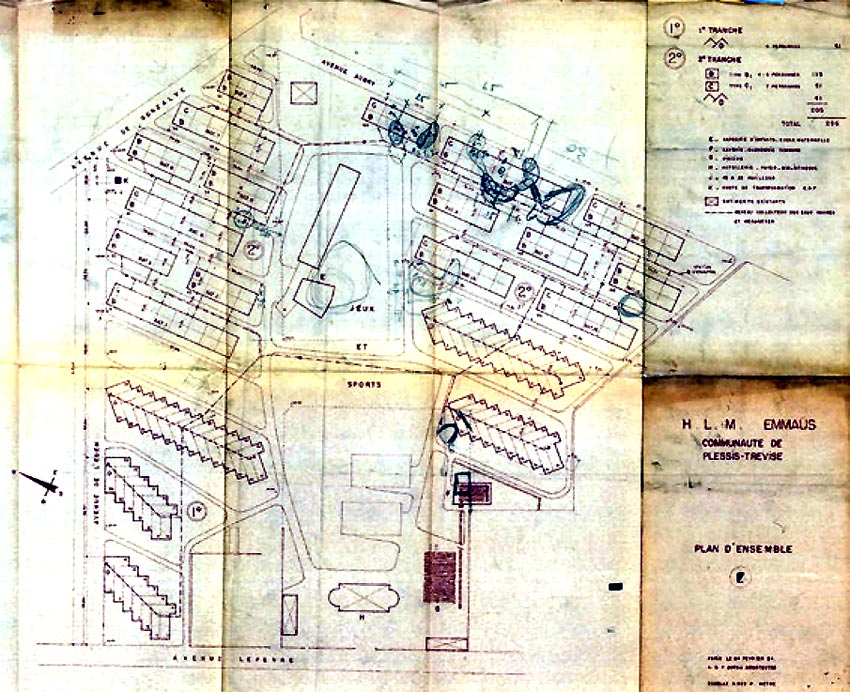
Cité de la Joie, plan d’ensemble, (Plessis-Trévise, 24 février 1954, archi : François Spoerry et Pierre Dufau). 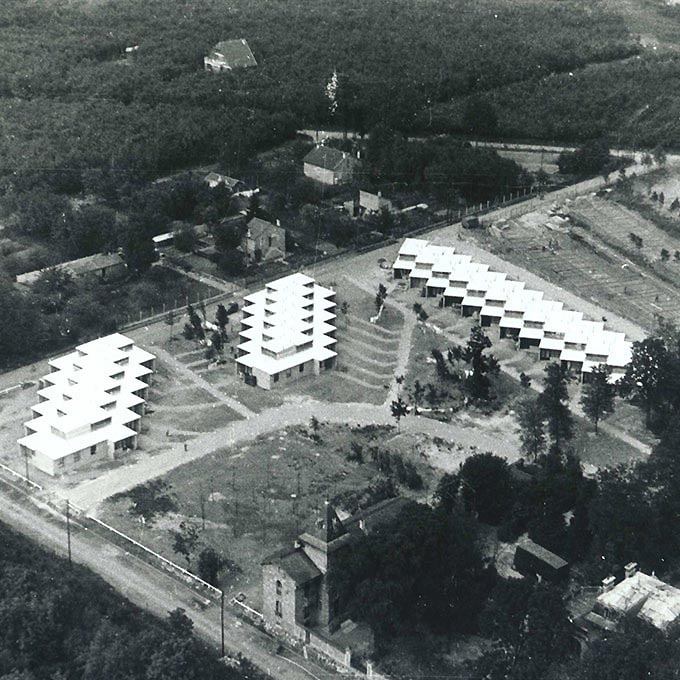
Emergency housing by François Spoerry 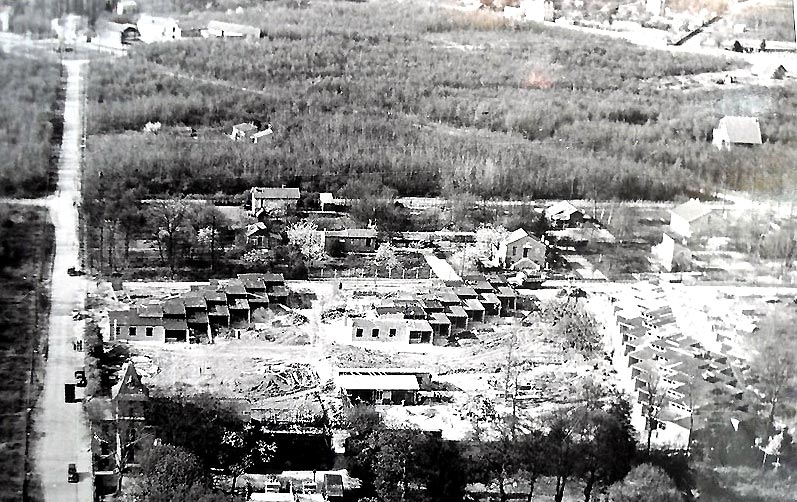

Winter 34 :In the winter of 1954, France suffered an unprecedented cold snap. The temperature fell below -15°C for long periods. Abbé Pierre, a former Resistance fighter and former MRP deputy, launched national media appeals for social solidarity to help the poor and homeless in danger. This is the beginning of the "Insurrection of Goodness". In Raoul CRESPIN's book, the pastor Maurice VOGE explains to us that "The former deportee François SPOERRY could not stand the fact that there were men without a roof over their heads. This architect, who knows how to make things look good, stubbornly examined the problem of the homeless. SPOERRY believed that it was necessary to build in quantity, quickly and cheaply and at prices that were profitable for the owners and bearable for the workers. Build for each household a decent dwelling, of sympathetic appearance, independent, unopposed, pleasantly arranged". But François SPOERRY came up against countless administrative, financial and technical difficulties. Yet he will write, "Faith lifts mountains". Indeed, the "emergency housing" in Mulhouse is being built and is a success... 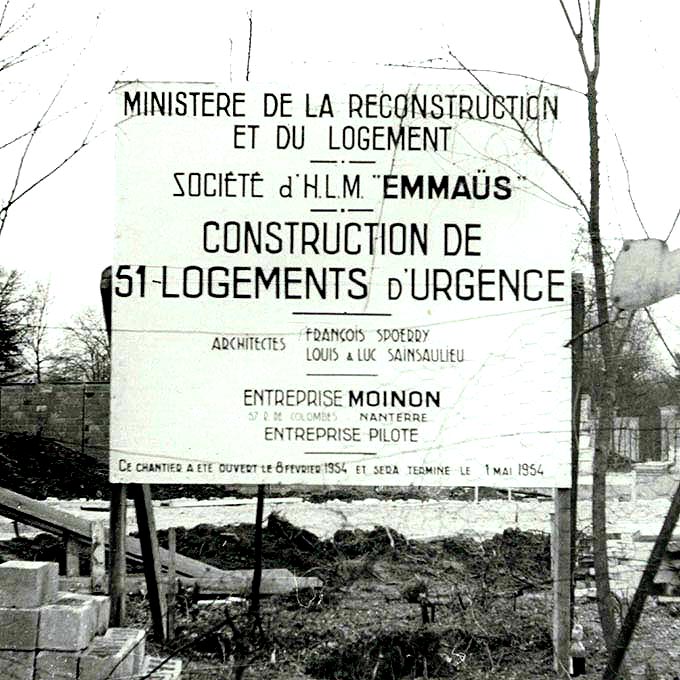
Disappointment :After his poignant appeal, which enabled him to raise large sums of money in a few days, the abbé PIERRE proposed to the then Minister of Reconstruction and Urbanism, Maurice Lemaire, to build in Plessis-Trévise, a first 'emergency city', consisting of 12,000 dwellings, the execution of which he naturally entrusted to François SPOERRY. "I am happy to be able to accommodate people in quantity. For me, this is the culmination of many years of work and the price of many disappointments" he wrote to Pastor VOGE. Unfortunately, the Ministry imposed such low prices that F. SPOERRY had to abandon his project. Future slums will be built instead of decent housing... 
Open letter to Abbé PIERRE :Disappointed, François SPOERRY wrote an open letter to Abbé PIERRE: " You entrusted me with the realisation of your first emergency housing estate in Plessis-Trévise, but this joy quickly turned to anxiety when I understood how the Minister of Reconstruction and Urban Planning intended to build the 12,000 "first necessity" housing units. You have been told that it is possible to build a simple but comfortable house for 500,000 francs (at the time). This is not true... You were told that these houses would be durable and that their maintenance costs would be minimal, that the housing would be perfectible, that these housing estates would be pleasant looking... This is not true". 
Social housing :One can understand, by discovering this episode in the life of the architect of the Cité lacustre, why he returned several times to his disappointment at not being able to build the social housing he had planned in Rue du Septentrion, in the interview he gave me... In 1983, the commune of Grimaud decided to build social housing. But as it was cruelly short of land, it granted PG3's building permit with one condition: that the developer give up a plot of land to accommodate 30 social housing units. The architect gave a plot of land at the back of the car park at the entrance to PG1. This car park was intended for the city's merchants... The Mayor at the time, Jean Paul BREHANT, who was also President of the ASP, asked François SPOERRY to carry out this project... Another social housing project that the architect carried out was the building in front of the communal port, rue de l'Amarrage. This housing was reserved in priority for the inhabitants of Portgrimaud and Grimaud working in the lake city or in the commune... 
|
© Yves Lhermitte 2023 Reproduction prohibited without permission...